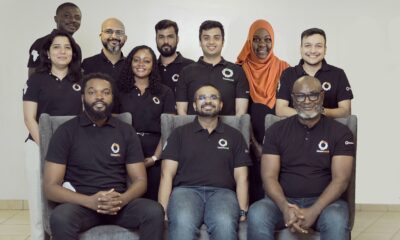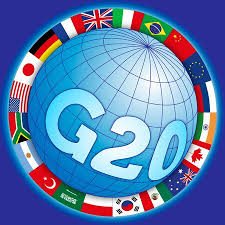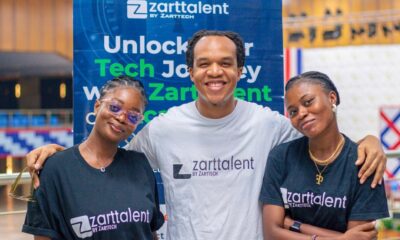Opinion/White Papers
Our Youth and the Protests – Looking Beyond End SARS
Published
4 years agoon
By AUSTIN OKERE
The youth are not our enemies; let us remember this before we do anything rash such as using brute force to quell their protests. They are our children that have come of age. Their flaws are our failings as parents. All over the world, the youth have broken ranks with the earlier generation when they feel that their future is being mortgaged, mostly through excessive greed of the “elders”.
The wind of change has been blowing for quite a while. After the global financial crisis in 2008 there was the Occupy Wall Street protests in the America. Occupy Wall Street (OWS) was a protest movement against economic inequality that began in Zuccotti Park, located in New York City’s Wall Street financial district, in September 2011. It gave rise to the wider Occupy movement in the United States and other countries. Thereafter came the Extinction Rebellion, a global environmental movement with the stated aim of using non-violent civil disobedience to compel government action to avoid tipping points in the climate system, biodiversity loss, and the risk of social and ecological collapse. Young Greta Thunberg, a Swedish environmental activist gained international recognition as the face of the protests for promoting the view that humanity is facing an existential crisis arising from climate change. Quite recently, there was the Black Lives Matter protests which started in America and gained momentum, after a white policeman brutally murdered a black man, George Floyd, by kneeling on his neck for 8 minutes and 46 seconds. The #BlackLivesMatter movement is a Global Network that builds power to bring justice, healing, and freedom to Black people across the globe.



The Arab Spring, closer to home is indelibly etched in our minds. It was sparked by the first protests that occurred in Tunisia on 18 December 2010 in Sidi Bouzid, following Mohamed Bouazizi’s self-immolation in protest of Police Corruption and ill treatment. It escalated into a series of anti-government protests, uprisings, and armed rebellions that spread across much of the Arab World in the early 2010s.
The past two years have indeed been years of discontent, with protests demanding the removal of corrupt governments, better living standards, greater freedoms and more rights, toppling leaders from Bolivia to Sudan, with the latest being the forced resignation of the President of Kyrgyzstan after weeks of mass protests. The leaders of Bolivia, Algeria, Lebanon, Iraq and Sudan have been pushed out as a consequence. Youth Protests across the world aiming to take back their future is like a moving train. Stand in front of it and it will crush you. Remain on the platform and it will leave you behind; or you can hop on it for a ride into a future of social Justice and good governance.


Truth be told Nigeria’s case is not very different, even though in fairness, it did not start with this regime. It is an endemic problem that has assumed exponential proportions. SARS (Special Anti-Robbery Squad) and the injustice they perpetuate with characteristic impunity is a microcosm of the Nigerian situation. In June 2018, CNN announced that Nigeria had overtaken India as the country with the largest number of people living in extreme poverty, with an estimated 87 million Nigerians, or around half of the country’s population, thought to be living on less than $1.90 a day. Data from the National Bureau of Statistics reveals that Nigeria’s unemployment rate as at the second quarter of 2020 was 27.1%, indicating that about 21.7 million Nigerians remain unemployed. The data also reveals that the worst-hit are Nigerian Youths (between the ages of 15 and 25 years) with over 13.9 million currently unemployed.
With the largest economy in Africa (GDP of $447b in 2019 compared to South Africa $359b and Egypt $303b), and despite her abundant natural resources and huge revenue from oil and gas exports of $32.6 billion in 2018 (according to eiti.org) it seems that Nigeria is experiencing growth without shared prosperity. The gap between the rich and poor is ever increasing, as is the gap between the “in Crowd” and those left behind. Treasury looting and stashing hoards abroad has not helped the deficit in infrastructure and the enabling environment for creating Jobs. According to TRT World, Every year, Africa loses more than $88b due to illicit capital flight, amounting to 3.7 percent of the continent’s GDP of $2.6trillion.Our youth are forced to take to immigration – legal and illegal, sometimes risking dangerous trails in the Sahara desert and across the Mediterranean Sea in rickety rafts in pursuit of survival. Nigeria has been a “country of huge potential” since independence 60 years ago. When will this giant wake up from her slumber?


It is good that our youth have found Purpose behind a common goal. The strategy, conduct and prosecution of the peaceful protests has so far been remarkable. Unlike previous ones, this Youth Movement has not been punctured by tribalism, religion nor compromised by “leaders”. The youth have stood as one, behind a vision of a better country with shared prosperity and social justice. The youth have finally proved that they are not lazy, clueless and entitled. To buttress this, PayStack, a Fintech company founded in 2016 by Nigerian Youths Shola Akinlade and Ezra Olubi has been acquired by global fintech giant Stripe, in the biggest M&A deal in Nigerian corporate history. Just recently, Interswtich, another Youthful Nigerian Company reached unicorn status after Visa acquired a minority equity stake in the firm, making her one of the most valuable African fintech businesses with a valuation of $1 billion,”. CWG Plc’s significant contribution to Financial Inclusion is another example. Diamond bank (now acquired by Access Bank) with 7m customer accounts after 23 years was able to add an additional 6m customers, mostly from the Bottom of the Pyramid in just one year after the launch of the Diamond Yello Account, Powered by CWG and MTN.


It is about time that the youth invite themselves to the political table, because it is about their future. It is imperative to get involved in politics right from the grassroots, where the impact is most felt. It is through such initiatives that we can ensure quality and inclusive education and healthcare for the masses while create an enabling environment to attract businesses and create jobs. It is from here that they can ensure that the voice of democracy rings out loud throughout the land (and not one political godfather installing his stooges and milking the state treasury). #EndSARS was just a catalyst, it is imperative to now look #BeyondEndSARS and focus on the broader goals of social justice and equity.

The Youth have drunk deep of this cup of knowledge and empowerment, and there is no turning back. Even though the protests end in the streets, they will be carried deep in their hearts. This movement is by no means to a destination but rather a journey of sustainable nation building. They will begin to ensure that the demand side of governance is deeply entrenched and that the voice of democracy will always be heard loud and clear at every ballot. Gone will be the days when they were used as thugs during elections and dumped soon after, and the days when they disenfranchised themselves from apathy to the pollical process and the attendant requirement of probity from elected officials. This is just the beginning; the best of the Nigerian Youth is yet to come – Finally there is hope for our dear country.
Austin Okere is the Founder of CWG Plc, the largest security in the technology sector of the Nigerian Stock Exchange, and Entrepreneur-in-Residence at CBS, New York. Austin also serves on the Advisory Board of the Global Business School Network based in Washington, and on the World Economic Forum Global Agenda Council on Innovation and Intrapreneurship. Austin is a Non-Executive Director at Globus Bank and serves on the Board of Trustees of the Risk Management Association of Nigeria (RIMAN). Austin now runs the Ausso Leadership Academy focused on Business and Entrepreneurial Mentorship.
You may like
-


OmniRetail Emerges First in Financial Times’ Ranking of Africa’s Fastest-Growing Companies
-


Forging Winning Partnerships – How Mercy Corps Nigeria and MoMo Agent is Helping to Restore and Improve Livelihoods
-


Fintech Can Bring Financially Excluded into Formal Sector In Nigeria – Adebola Sanni
-


Wema Bank Doles out N8 Million Seed Fund to Startups
Opinion/White Papers
Balancing Growth with Affordability In Nigeria’s Telecom Industry
Published
5 days agoon
May 16, 2024By Elvis Eromosele
Today, Nigeria’s telecommunication industry stands at a crossroads. It is facing pressure on a thousand different fronts. On the inside, it is battling with the challenges of sustainable operations and shareholders demands and on the outside, raising costs and regulatory constraints.
The Nigerian telecom industry has immense potential. The recently launched GSMA digital economy report made this point. It projects a rise of 15 million new internet users by 2028. It equally highlights the industry’s significant contribution to the nation’s GDP.
Industry players, in the light of existing reality, have determined that a tariff increase will provide some succour and allow it to breathe. The Association of Licensed Telecom Operators of Nigeria (ALTON), an umbrella organisation for telecom and allied services providers, is at the forefront of the push for tariff increase.
ALTON argues that current tariffs, unchanged for over a decade, are insufficient to maintain operations and may indeed hinder vital investments in network infrastructure and possibly impact service quality. This assertion gains traction against a backdrop of foreign exchange losses, declining profits, and the increasingly challenging economic environment
Within the same decade, electricity tariff was raised, at least, three times; the price of fuel has gone up by over 300 per cent and inflation has effectively climbed to over 33 per cent. Yet, operators’ demand for telecom tariff increases has sparked a contentious debate among industry stakeholders. For many, the crux of the matter is that the economy is already hard, so telcos should not compound things by increasing tariffs at this time. Economists will take a dim view of this argument.
The telcos’ reason for pushing for tariff increases hinges on three main points. One, rising costs. Inflation, currency devaluation, increase in the pump price of fuel, electricity tariff increases and a general economic downturn have significantly increased operational expenses. The cost of maintaining and upgrading infrastructure, alongside acquiring foreign equipment, has outpaced current price structures.
The second is the investment challenges. Without a price adjustment reflecting economic realities, investors become hesitant. This stagnation in investment will limit the industry’s ability to expand networks, adopt new technologies like 5/6G and ultimately serve a growing population. The bulk of investment in the sector is dollar-denominated.
Then thirdly, unsustainable business environment. The industry contends with a multitude of charges and levies (the perennial multiple taxation). ALTON reveals that there are over 45. This burden, coupled with a perceived lack of regulatory independence, creates an unfavourable business climate.
The government, however, has firmly rejected the proposal for a tariff hike. The NCC has refused to approve it. Bosun Tijani, Minister of Communications, Innovation and Digital Economy, emphasizes the need for a comprehensive solution. He argues that higher prices would disproportionately affect affordability and hinder inclusion, particularly for low-income Nigerians. This outcome will no doubt widen the digital disparity in the country.
In my mind, to move forward, we must be able to strike a balance between the financial viability of telecom companies and ensuring service affordability for consumers. This path likely involves a multi-pronged approach.
We can start by reviewing the levy landscape. 45 is definitely too many. Reducing the number of charges levied on telecom operators could free up resources for investment. This can potentially create a more attractive business environment.
Secondly, regulation must be streamlined in line with global best practices. Experts concede that enhancing regulatory clarity and promoting an environment that encourages responsible risk-taking by investors would be crucial.
Moreover, operators have the option of exploring alternative revenue streams. This means that telecom companies can explore value-added services or targeted data packages to generate additional revenue without burdening core services.
The government is not left out. It must consider incentives. The federal government should as a matter of urgency consider targeted incentives that encourage network expansion and technological advancements. This will encourage operators to seek growth without solely relying on price hikes. The NCC must step up to the plate here.
At the heart of the debate lies the delicate balance between consumer affordability and industry sustainability. While tariff increases may alleviate financial strains for telecom operators, they also raise concerns about affordability and access for consumers, particularly in a country where digital inclusion remains a priority.
To ensure that the telecom sector achieves its potential, we can’t play the ostrich anymore. Constructive dialogue and collaboration between government, industry stakeholders, and regulatory bodies are indispensable at this point. Adjustments must be made, if the sector is to maintain its contribution to Nigeria’s GDP, currently eight per cent, and thus continue to boost the broader ICT ecosystem growth.
By implementing cost-reflective tariffs, telecom companies can enhance their financial viability, enabling them to make essential investments in infrastructure, technology, and service quality.
Eromosele, a corporate communication professional, writes via: [email protected]
Opinion/White Papers
How Digital Marketing is Embracing the Ever-changing World of Work
Published
1 year agoon
April 30, 2023By Gaston Taratuta, Founder and CEO of Aleph Group, Inc
The world of work has always changed and evolved in line with technological advances and major consumer shifts. Did you know, for example, that in Victorian Britain people were paid to wake factory workers up by tapping on their windows? Called knocker-uppers, they were a common sight until alarm clocks rendered them obsolete..
In recent months you may have seen articles predicting that, thanks to the rise of artificial intelligence (AI) tools such as ChatGPT, prompt engineering will become an important and necessary career skill in the near future. Some experts even suggest that the field, which boils down to giving AI tools the best possible inputs, is so critical that it may even become a career path in itself.
But that’s just one example of where the world of work is headed. If you really want to future-proof yourself, it’s worth having a much broader view. And on that front, you could do a lot worse than keeping a close eye on the digital marketing sector.
An industry unafraid of change
Digital marketing has a long history of adapting and embracing big technological and societal shifts. From the early days of website banner ads through to innovative products on social media and streaming platforms, each advancement has required people in the sector to build up new skills to ensure that they’re providing the best possible service to their clients.
That’s unlikely to change in the near future either. According to LinkedIn, the “Digital Marketing Specialist” role is among the top 10 most in-demand jobs, with 860 000 job openings. The fact that the most requested experience in digital marketing includes social media, content strategy, SEO, analytics, also shows how broad the field has become.
Even those specific areas of experience are changing all the time. Take online communities, for example, before 2016, when the likes of Facebook and Twitter were well established, no one had any expertise in marketing on TikTok. Today, the platform has more than a billion users and is an increasingly important part of any organisation’s digital marketing strategy. As a result, people in digital marketing have had to build up the skills necessary to market on the platform.
The same is true for every new product a social media platform launches. Twitter, Snapchat, Instagram, and Spotify, are all unique in its form. It’s also worth remembering that a user’s experience on TikTok has nothing to do with their experience on Twitter. You seldom meet someone who understands all the platforms very well. Additionally, there are changes all the time, so to be successful in digital marketing you have to be able to learn new things and be flexible all the time.
These are also the qualities that you need to succeed in the rapidly changing world of work.
Acquiring the right skills
So, how should you go about acquiring the skills necessary to thrive in the world of digital marketing and beyond?
There is no doubt that formal certification can be incredibly helpful, especially when you’re starting out on your journey. It’s part of why we launched our free Digital Ad Expert community. The 12 week course covers the basics of strategy and analytics, as well as platform specific advertising methodologies for all the major social media platforms.
Once you have those basics in place though, self-exploration becomes critical. You have to be curious. You have to want to learn. You have to commit. By certifying yourself on all the platforms you can (this can usually be done for free). Learn things like Google Adwords, how to do marketing on Instagram, and as many other products as you can.
Getting to that point won’t take long, for some people it can take as little as six months. From there, practice and keep practising. If you don’t have a client to practise on, market yourself. Soon enough you’ll learn that, in such a fast-changing world, years of experience matter less than your ability to deliver results.
Powered by the present, ready for the future
It’s something that’s been true of digital marketing for a while now. It’s also something that’s becoming increasingly true of the world of work in general. So, if you want to be ready to face the future, look to an industry that already has a strong track record of adapting to epoch-shifting changes.
Opinion/White Papers
Bridging the Gaps to Safeguard the Future of Hybrid Work
Published
1 year agoon
April 28, 2023By Emmanuel Asika, Country Head, HP Nigeria
The emergence of cultures within adaptable working models that facilitate improved flexibility and therefore well-being whilst generating new range of opportunities to innovate and increase productivity shows that hybrid work is here to stay. A report by
Gartner shows a sizeable 51% of US knowledge workers are projected to work ‘hybrid’ and 20% to work fully remotely in 2023. Just as a Phillips Consulting (PCL) study reveals how Nigerian executives considered culture as one of the top factors to consider in their business strategy, moving from a 17% focus pre-COVID to a 44% focus in some cases to align with the future of work.
Notably, these new dynamics signal new trajectories for security teams, as business protection is now more demanding because the path has become doubtful. To mitigate this, emphasis must be on protecting endpoints – PCs and printers; the ‘focal point’ of most attacks. Thus, to detect, prevent, and control cyber threats, new cybersecurity strategies are required; to dispel the threats associated with lost or stolen devices by boosting remote PC management.
Mitigating security slips
It’s clear that 82% of security experts adopting a hybrid work model have slip-ups in their organization’s security architecture, a new research and a hybrid security report from HP Wolf Security reveals. The epicenter of the hybrid worker’s world is the endpoint.
In fact, 84% of security experts agree that endpoint is where the most enterprise-damaging cyber-threats occur, and it’s the root of most security threats – be it a PC, smartphone, laptop, tablet, or complementary peripherals like printers. For malicious attackers, these devices can be a target entry point.
Nonetheless, local networks may be compromised and misconfigured. But truly, endpoints are the link bridging unprotected technologies and imperfect users. When devices are not provided with requisite routine enterprise protection, hybrid work models suffer and negatively affect productivity. Significantly, machines and employees working remotely are likely to be without appreciable protection and left vulnerable.
Furthermore, some employees who are confined to their comfort zone without assistance of knowledgeable coworkers makes them more prone to either opening an attachment containing malware or clicking on a risky link. Employees likewise work in cafes, restaurants, and airports, and perhaps even living the digital nomad lifestyle abroad; they aren’t just working from home (WFH). Actually, two-thirds (66%i) of security leaders and IT experts consequently concluded that the most pronounced cybersecurity weakness in their organization is the possibility for hybrid employees to be compromised – phishing, ransomware, and attacks via unsafe home networks are also cited as top enterprise risks.
Forward-thinking organizations now seem focused on fine investment in securing hybrid work, with a commendable four-fifths i.e., 82% of security leaders increasing budgets threshold specifically for hybrid workers, and 71%of these leaders expect this focus to increase further in 2023. Yet, the impact of their budget must be targeted at the appropriate tools with a concentration on positioning the endpoint front and center of any hybrid security strategy.
Leaving no stone unturned
An improved remote management of devices, despite its attendant complexities, is most necessary as most major considerations for the IT and security teams, in this hybrid age. Also, 70%i of security experts conclude that the risk of lost or stolen devices is prevalent in hybrid work. This triggers the question – when remote machines are powered down or offline, what happens? Locating or safeguarding data on these devices could be tasking, and substantially risky if they either contain confidential trade secrets, personally identifiable information (PII), or intellectual property (IP). The reality here is that Cloud Technologies have helped to reduce the workload here, but they’re not 100% effective.
Human-error risk tendency is rife with itinerant workers always on the move; same way there will always be unethical hackers lurking around for susceptible devices they can attack. This trend raises risks, exclusively in highly regulated sectors like government – where a lost or stolen laptop could mean a
national security risk.
Connecting with a fresh approach
In Nigeria, an emerging economy, institutions are gradually deepening hybrid work models via infrastructure investments despite challenges of electricity, network coverage, low bandwidth, and affordability. HP has also been working on designing a model of
IT management connectivity solution hence, the new HP Wolf Connect service now enables IT to manage devices even when powered down or offline.
So, for IT managers, what can they do to mitigate these concerns? Step one is to find a fresh approach to link remote computers over cellular networks. This implies that devices can be controlled even when turned off or offline. Fundamentally, such functionality could be deployed to connect with lost or stolen devices and then lock and wipe them. This approach will not only lower the risk of data leaks and violations, but it can also moderate IT expenses by cutting cases of PC replacement or remediation. A stronger and secure connection to remote computers also reduces the time and effort required to resolve support tickets. Teams can precisely report where and when devices went missing, and how long it took to lock or erase them. Now, that’s a fresh approach to security.
About 80% of institutions laid claims to have deployed numerous tools and policies to protect hybrid working staff. However, what’s vital now is that these tools and policies require a paradigm shift from old perimeter-focused thinking. Once again, endpoint must become the focus for applying protection in the hybrid age. Accepting hardware-enforced security features and protection above, in, and below the OS – such as application isolation – will be strategic for protecting end-users without impacting on the freedoms that hybrid work admits.
This model should be part of an approach to hybrid workplace security that takes into consideration the distinct threats and contextual challenges that are more common with flexible working.
Incidentally, about two-thirds, representing 61% of corporations and leaders, are saying that protection of their hybrid workforce will be harder moving forward. This doesn’t necessarily have to be the case. Enhanced remote management and the adoption of hardware-enforced security, can help businesses unleash end-user productivity without alluring extra cyber risks.
Consequently, businesses should upgrade to a hybrid work model, at a time when sustainable growth is strategically significant to all organizations, bearing a fine blend of tech tools and motivated people to optimize lasting productivity. This is the future of work.
Popular News
-

 Cover Story3 weeks ago
Cover Story3 weeks agoMike Adenuga @71: Salute to Nigeria’s Game Changer in Oil, Banking and Telecom Sectors
-

 IT in Banking3 weeks ago
IT in Banking3 weeks agoG20 Unveils SLAs for Cross-border Payment
-

 Innovations3 weeks ago
Innovations3 weeks agoHow Tech Enthusiasts Can Garner In-Demand Skills in 2024
-

 Global News3 weeks ago
Global News3 weeks agoDeloitte’s Women @ Work report shows stagnating progress in and outside the workplace for women